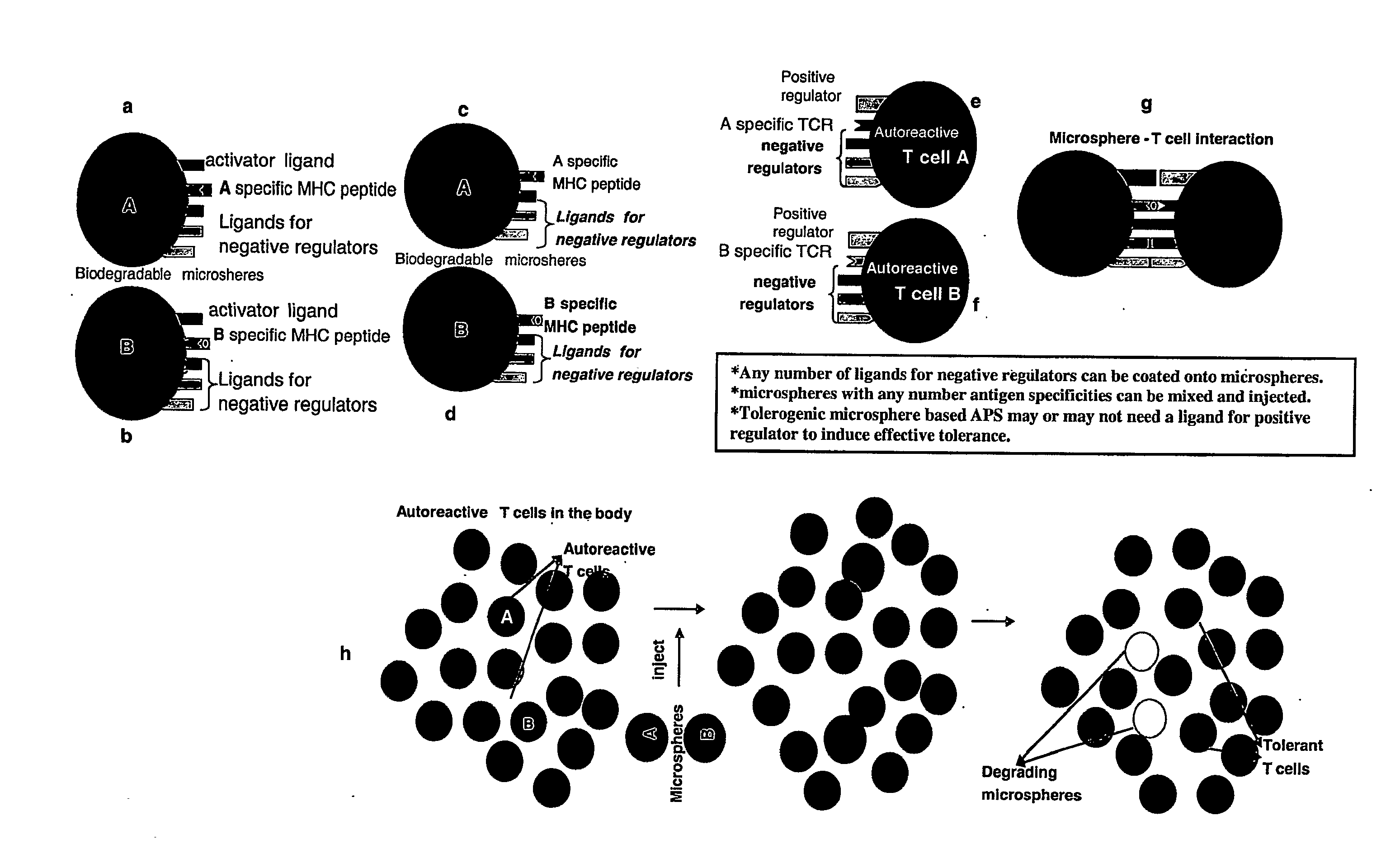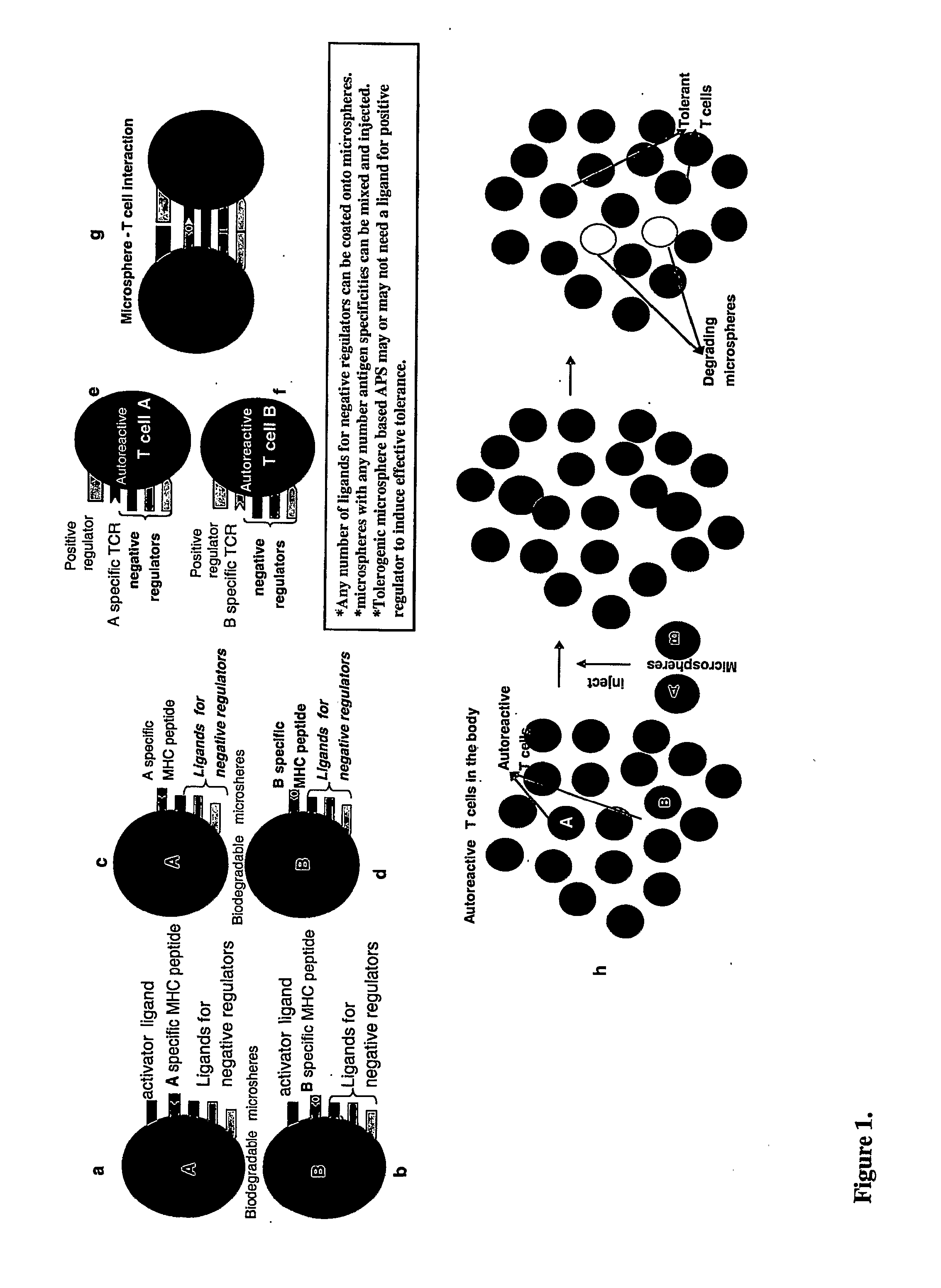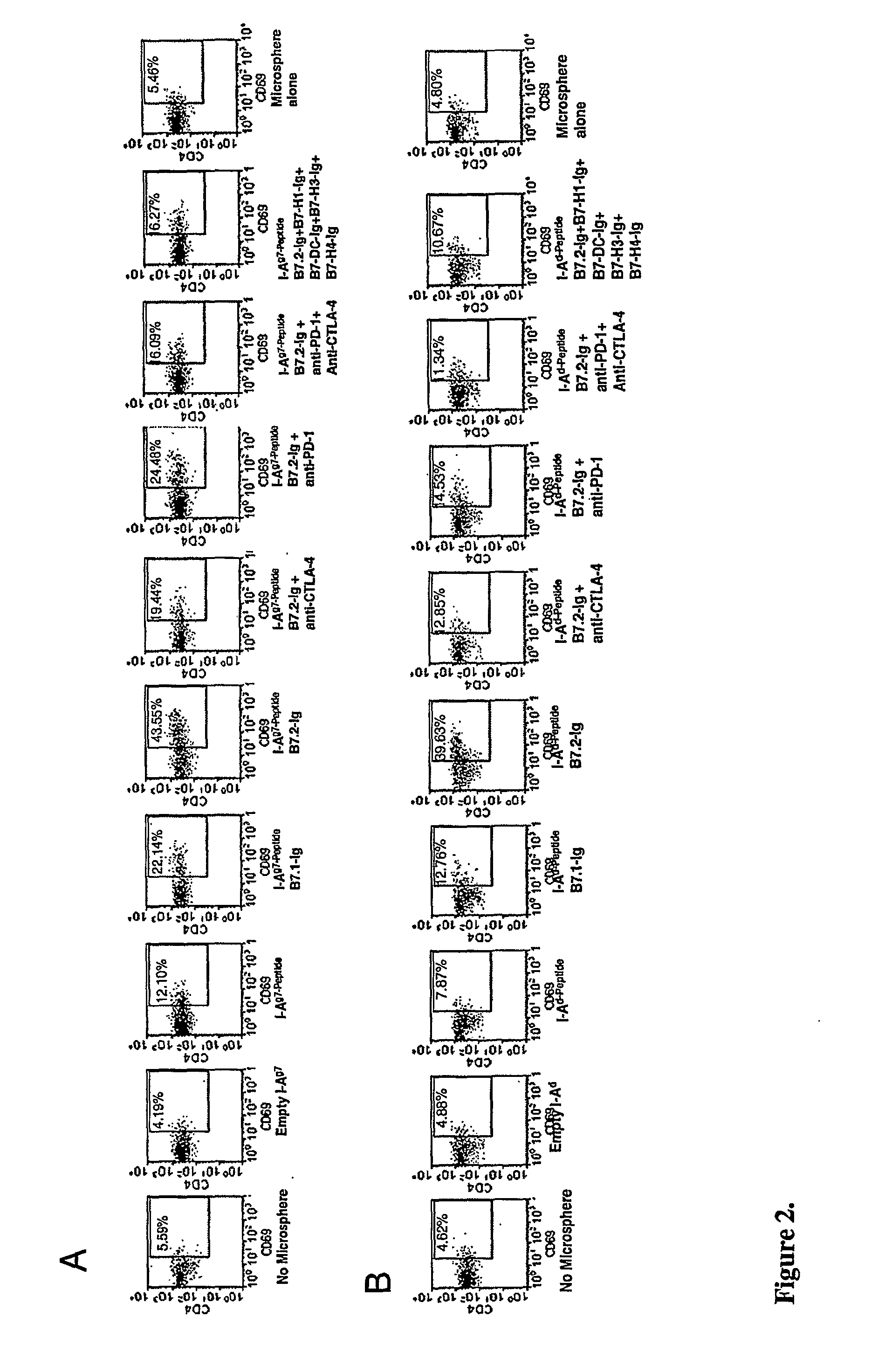Tolerogenic biodegradable artificial antigen presenting system
- Summary
- Abstract
- Description
- Claims
- Application Information
AI Technical Summary
Benefits of technology
Problems solved by technology
Method used
Image
Examples
example 1
Differential Role of B7.1 and B7.2 in T Cell Tolerance
[0070]Bone marrow derived DCs or DCs purified from spleens were pulsed with ovalbumin (Ova) and maturation was induced using LPS for 24 hr and cultured in the presence of T cells from naïve or Ova primed mice and B7.1, B7.2 and anti-CTLA-4 blocking antibodies. Interestingly, T cells from Ova primed mice, but not naïve mice, showed significantly lowered T cell activation and proliferation, IL-2 and IFN-γ responses, but an increased IL-4 and IL-10 production in the presence of anti-B7.2 antibody compared to isotype control or B7.1 antibody. Although T cells from these cultures containing anti-B7.2 antibody showed no increase in CD4+CD25+ T cells compared to controls, interestingly, a significant number of CD4+ T cells from this culture showed increased TGF-β1 surface expression. Tertiary stimulation of these T cells induced much stronger IL-4 and IL-10 responses, but undetectable level of secreted TGF-β1. Co-culture of these T cell...
example 2
Induction of Immune Tolerance and Tregs Using DC Directed CTLA-4 Ligation
[0071]A novel approach was designed to generate robust antigen specific tolerance and Tregs. In this approach, antigen pulsed mature DCs that were coated with cross-linking anti-CTLA-4 antibody were used to induce tolerance and Tregs to that specific antigen. DCs were pulsed with either ovalbumin and coated with anti-CTLA-4 antibody and injected intravenously into mice that had been primed with this antigen. Mice administered with anti-CTLA-4 coated mature DC, but not immature DC, produced antigen specific T cell suppression suggesting that surface bound antibodies are rapidly internalized by immature DC and not available for interacting with CTLA-4. Mice injected with anti-CTLA-4 antibody coated mature DC showed significantly suppressed T cell proliferation and IL-2 production but increased IL-10 and TGF-β1 response upon ex vivo restimulation with the same antigen compared to mice that received DCs coated with...
example 3
DC Directed CTLA-4 Engagement Study in NOD Mice
[0072]The DC directed CTLA-4 engagement approach in NOD mice was tested in vitro. A pool of three GAD65 peptides (GAD206-226, GAD217-236 and GAD286-300), that are the primary and some of the earliest targets for autoreactive T cells in NOD mice(135,136), were used as antigen in an in vitro study using T cells collected from diabetic mice. Though the numbers were small, we observed that autoreactive T cell proliferation to these peptides suggesting that T cells specific to these peptides are present in diabetic mice. DCs collected from pre-diabetic mice were pulsed with these peptides, induced maturation, coated with anti-CTLA-4 or control Ab and tested against T cells from diabetic mice. Anti-CTLA-4 ab coated DCs suppressed T cell response significantly compared to control Ab coated DCs when T-cells from Diabetic mice and naïve DCs-were used. Cells from these cultures were collected on day 7, washed, rested for 3 days, and analyzed for ...
PUM
| Property | Measurement | Unit |
|---|---|---|
| Diameter | aaaaa | aaaaa |
| Diameter | aaaaa | aaaaa |
| Diameter | aaaaa | aaaaa |
Abstract
Description
Claims
Application Information
 Login to View More
Login to View More - R&D
- Intellectual Property
- Life Sciences
- Materials
- Tech Scout
- Unparalleled Data Quality
- Higher Quality Content
- 60% Fewer Hallucinations
Browse by: Latest US Patents, China's latest patents, Technical Efficacy Thesaurus, Application Domain, Technology Topic, Popular Technical Reports.
© 2025 PatSnap. All rights reserved.Legal|Privacy policy|Modern Slavery Act Transparency Statement|Sitemap|About US| Contact US: help@patsnap.com



